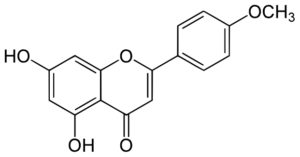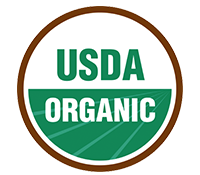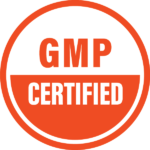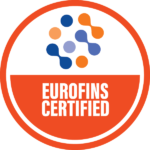
Origin: Derived from the Damiana (Turnera diffusa) Plant
Also Known As:
5,7-dihydroxy-2-(4-methoxyphenyl)-4H-chromen-4-one
5,7-dihydroxy-4′-methoxyflavone
Linarigenin
Acacetine
Buddleoflavonol
Linarisenin
4′-Methoxyapigenin
Apigenin 4′-methyl ether
5,7-Dioxy-4′-methoxyflavone
Overview: Acacetin is an anti-aromatase and estrogenic activity blocker that is derived from the Damiana Plant. This has been shows as the most effective natural substance to block the synthesis of estrogenic activity. Acacetin is used for weight loss, reduction of estrogen synthesis, relief from menopause symptoms, and prevention in tumor growth. Acacetin is an effective weight loss measure as it blocks the estrogen synthesis in the body and forces the body to seek contractile protein from the synthesis of estrogen receptor fat cells.
Common Dosage: The recommended dose of Acacetin depends on several factors such as the user’s age, health, and several other conditions. The average dose ranges between 100 mg and 300 mg per day.
Overview Description
Acacetin (5,7-dihydroxy-4-methoxyflavone) is a naturally occurring flavonoid, a 4′-O-methylated flavone of the parent compound apigenin
In plant synthesis the enzyme apigenin 4′-O-methyltransferase uses S-adenosyl methionine and 5,7,4′-trihydroxyflavone (apigenin) to produce S-adenosylhomocysteine and 4′-methoxy-5,7-dihydroxyflavone (acacetin).
Benefits and Uses
Helps Reduce estrogen by moderate aromatase inhibition and also known to possess numerous pharmacological properties, including neuroprotective, cardioprotective, anticancer, anti-inflammatory, antidiabetic, and antimicrobial activities.
May improve sex drive
High estrogen decreases sex drive in men.
Acacetin supplementation has shown improvement in libido production after a few days of continued use.
Could help Increase muscle mass
Acacetin supplementation is believed to be a key solution to help men who have been suffering from testosterone deficiency for a long time.
Promotes weight loss
Acacetin may also contribute to weight loss by decreasing estrogen levels.
It has been shown to exhibit strong inhibitory effects against glutathione reductase, cyclo-oxygenase, acetylcholinesterase, aldose reductase and xanthine oxidase enzymes.
Forms and Sources
Acacetin naturally found in safflower seeds and several plants such as Saussurea involucrate, Robinia pseudoacacia (black locust), Turnera diffusa (damiana), saffron and Scutellaria
Side Effects and Interactions
No known side effects
How to Label
Acacetin (5,7-dihydroxy-4-methoxyflavone)
Research & Studies (References)
Acacetin, a flavone with diverse therapeutic potential in cancer, inflammation, infections and other metabolic disorders
Acacetin is a potent molecule reported for its strong anti-inflammatory and anti-cancer activity, however further scientific evidence is essential to validate its potency in disease models associated with inflammation and cancer. There is limited information available for toxicity profiling of acacetin; therefore, further studies would aid in establishing this natural flavone as a potent candidate for research studies at clinical setup.
https://pubmed.ncbi.nlm.nih.gov/32866514/
Acacetin protects against cerebral ischemia-reperfusion injury via the NLRP3 signaling pathway
https://pubmed.ncbi.nlm.nih.gov/30632500/
Acacetin—A simple flavone exhibiting diverse pharmacological activities
https://www.sciencedirect.com/science/article/abs/pii/S1874390019301247
A Systematic Study of the Metabolites of Dietary Acacetin in Vivo and in Vitro Based on UHPLC-Q-TOF-MS/MS Analysis
https://pubs.acs.org/doi/10.1021/acs.jafc.9b00330
Isolation of Acacetin from Calea urticifolia with Inhibitory Properties against Human Monoamine Oxidase-A and -B
The chloroform extract of the leaves of C. urticifolia showed potent inhibition of recombinant human monoamine oxidases (MAO-A and -B).
Follow-up studies showed reversible binding of acacetin with human MAO-A and -B, resulting in competitive inhibition. Acacetin showed more preference toward MAO-B than to MAO-A, suggesting its potential for eliciting selective pharmacological effects that might be useful in the treatment of neurological and psychiatric disorders.
https://pubs.acs.org/doi/10.1021/acs.jnatprod.6b00440
Acacetin suppresses the electrocardiographic and arrhythmic manifestations of the J wave syndromes
Results
Acacetin (5–10 μM) reduced Ito density, AP notch and J wave area and totally suppressed the electrocardiographic and arrhythmic manifestation of both BrS and ERS, regardless of the experimental model used.
https://journals.plos.org/plosone/article?id=10.1371/journal.pone.0242747
Acacetin exerts antioxidant potential against atherosclerosis through Nrf2 pathway in apoE−/− Mice
Our findings demonstrate the anti-oxidative and anti-atherosclerotic effects of acacetin, in turn suggesting its potential therapeutic value in atherosclerotic-related cardiovascular diseases (CVD).
https://onlinelibrary.wiley.com/doi/full/10.1111/jcmm.16106
Water-soluble acacetin prodrug confers significant cardioprotection against ischemia/reperfusion injury
We found that intravenous administration of acacetin prodrug (10 mg/kg) decreased the ventricular arrhythmia score and duration, reduced ventricular fibrillation and infarct size, and improved the impaired heart function induced by myocardial ischemia/reperfusion injury in anesthetized rats.
https://www.nature.com/articles/srep36435
Acacetin ameliorates insulin resistance in obesity mice through regulating Treg/Th17 balance via MiR-23b-3p/NEU1 Axis
Upregulation of miR-23b-3p offset the effects of acacetin on obesity-induced IR through regulating Treg/Th17 cell balance via targeting NEU1.The present findings provide a possible prevention strategy for obesity-induced IR.
https://bmcendocrdisord.biomedcentral.com/articles/10.1186/s12902-021-00688-8
Acacetin Protects Myocardial Cells against Hypoxia-Reoxygenation Injury through Activation of Autophagy
Acacetin enhances glucose uptake through insulin-independent GLUT4 translocation in L6 myotubes
Results: Acacetin dose-dependently increased 2-DG uptake by enhancing GLUT4 translocation to the plasma membrane. Our results revealed that acacetin activated the CaMKII-AMPK pathway by increasing intracellular calcium concentrations. We also found that aPKCλ/ζ phosphorylation and intracellular reactive oxygen species (ROS) production were involved in acacetin-induced GLUT4 translocation. Moreover, acacetin-activated AMPK inhibited intracellular lipid accumulation and increased 2-DG uptake in HepG2 cells
https://pubmed.ncbi.nlm.nih.gov/32126492/
Acacetin Induces Apoptosis in Human Osteosarcoma Cells by Modulation of ROS/JNK Activation
The results of the present study indicate that acacetin may induce apoptosis to inhibit cell growth by activating the ROS/JNK signaling pathway in SJSA and HOS cells, suggesting that acacetin may be a promising candidate for the management of osteosarcomas.
https://pubmed.ncbi.nlm.nih.gov/33239866/
Acacetin improves endothelial dysfunction and aortic fibrosis in insulin-resistant SHR rats by estrogen receptors
The results showed that acacetin relieved endothelial dysfunction and reduced the aortic fibrosis in insulin-resistant SHR rats by reducing the release of inflammatory factors and improving vasodilatory function through estrogen signaling pathway.
https://pubmed.ncbi.nlm.nih.gov/32892299/
Effects and possible mechanisms of action of acacetin on the behavior and eye morphology of Drosophila models of Alzheimer’s disease
https://www.ncbi.nlm.nih.gov/pmc/articles/PMC4632086/
Natural Phytoestrogens: A Class of Promising Neuroprotective Agents for Parkinson Disease
https://www.sciencedirect.com/science/article/pii/B9780128095935000021













